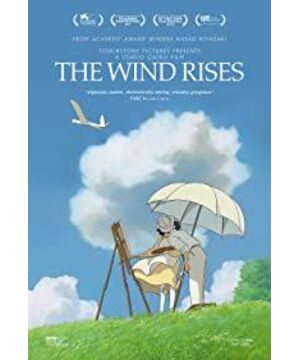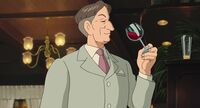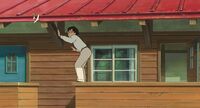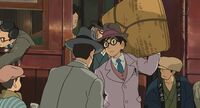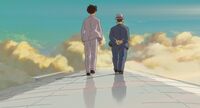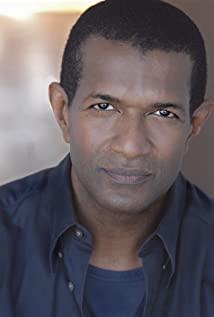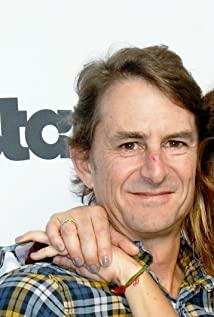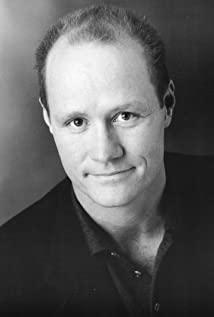The background explained at the beginning of the film is more than ten years before World War II. At that time, Junior Erlang was already a man with a dream - an aircraft designer. It is very important to explain this. It is not just that Erlang is an aspiring teenager. I think it is more important to defend Erlang in the future to design a plane that was metaphorically referred to as a "killing machine" in that era. Why? Paving like this? It was taken for granted to explain what Jiro Horikoshi made when he created this plane: he was just trying to realize his dream, and it had nothing to do with the war. Throughout many details of the whole film, it can be seen that Erlang is a kind-hearted person, especially when Erlang gave bread to the two children, and the attitude of the children just reflects that time, as well as now. Well, people are questioning the behavior of people like Erlang.
The second part, I think it started when I met Nahoko on the train. The film is called "The Wind Rises". "Wind" is the dark line connecting the whole film. It is very obvious here. When the wind blows He took on Erlang's hat and created a marriage that belongs to him and Nahoko. To a large extent, almost every part is inextricably linked with the wind. Another example is that the wind blows Nahoko's umbrella into the air. Erlang caught it, so I won't go into details here. Back to the topic, it happened to be an earthquake when he and Nahoko met for the first time, but I may be nervous, I always feel that this time is not just an earthquake, but also a metaphor for something (the impact of the war? Because Erlang that At that time, I was always hallucinating about the picture of the plane emerging from the war). At that time, it happened to be in the turbulent stage before World War II, and then the war soon involved Japan, and Erlang also successfully became an apprentice designing aircraft. It can be said that if there is no war, there may be no place for Erlang. The sadness of the biography is that your achievements may be based on a disgusting fact, but you must not beautify and avoid it, silently endure this. unfair condemnation.
On vacation, that was the most beautiful part of the movie, and I slowly fell in love with Nahoko, and I think the most interesting thing here is the existence of the Germans. To put it uglier, he is to distinguish between dreams and war for Erlang. The point of view is to make everyone realize that there are a group of people who created some tools for their dreams, but they are only tainted by those in power. Those who invented explosives deserve to be praised, but those who abused explosives should be condemned.
In the end, dreams are as important as Nahoko. Erlang holds her with both hands and his left hand. He is very aware of her situation. Even for a second, Erlang will not waste time with Nahoko, because he knows, Once Nahoko goes back, she may not be able to come back... On the other hand, the paintbrush held in his right hand is not only a personal dream in the end, but also a destiny that has been sublimated to the country. It is believed that Erlang's attitude towards war is contradictory, but doing his best and dedicating his life to contribute to the country is an indispensable basic quality for an outstanding scientist (for the time being), and no one wants to meticulously temper it by himself. The axe chopped not wood but blood, and without asking why, that was all he could do.
From the perspective of biography, "The Wind Rises" may be suspected of bleaching, but from the perspective of a beautiful love story and an inspirational dream hunter, it achieves a perfect fusion of love and dreams.
View more about The Wind Rises reviews


